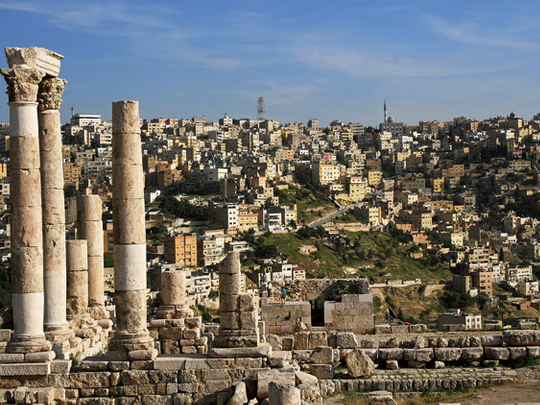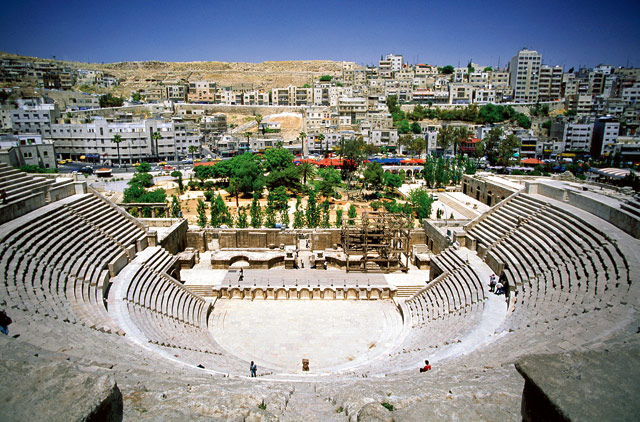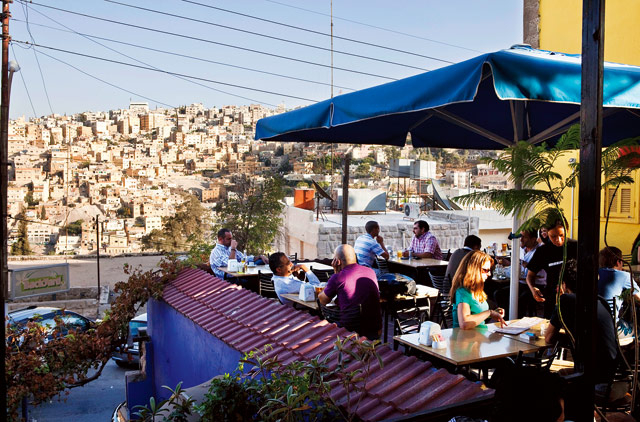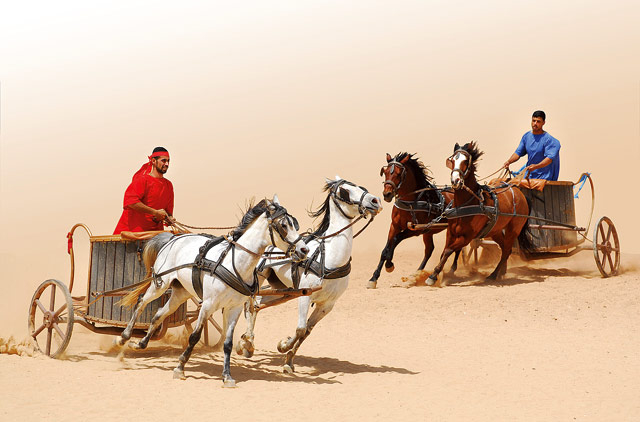
WHERE TO STAY
Elegant and centrally located, the historic Landmark hotel oozes old-world charm and boasts fine-dining restaurant Turquoise and the hip Glass Bar, with its panoramic city views. Or try the boutique Bonita Inn (bonitaamman.com) a converted 1950s house, with a tapas restaurant and garden terrace, where you can enjoy breakfast. Plus, it’s just 15 minutes from Rainbow Street. It costs
60 dinars (Dh312) per night for two.
WHAT TO SEE
Towering above downtown Amman, the ancient Citadel – an archaeological site – is a must-see not just for the ruins (you can see the second-century AD temple of Hercules) but also for the views, which take in the two contrasting sides of Amman: the modern, green Abdoun area (referred to as the Beverly Hills of Jordan) and the poorer downtown East Amman. During Ramadan the Citadel comes alive and traditional cafés and handicrafts are set up among the lit-up ruins. Walk to the downtown area from here and visit the 6,000-seater, second-century AD Roman theatre.
WHERE TO EAT
Jafra in old Amman is a must-visit – it’s a little grungy, but has a balcony, an oud player and great dishes like arayes, a sandwich of spiced minced lamb. Another culinary institution is Hashem (a favourite of His Majesty, says my guide) a tiny café downtown, which dishes up delicious falafel, hummus and sweet mint tea. The health-conscious should head to eco-eatery The Wild Jordan Café on Rainbow Street. Enjoy veggie food, herbal teas and smoothies on the terrace in the evening, while overlooking the Citadel. You can book tours to Jordan’s various nature reserves here. Rainbow Street is home to many restored houses-turned-cafés and is buzzing at night.
WHERE TO SHOP
There are lots of modern malls, but to experience the real strains of Amman, visit the main souq area in downtown – King Al Hussein Street features lots of trashy kitsch and Jordanian souvenirs, from 100 per cent Bedouin-made rugs, to mosaic plates and Dead Sea products. Rainbow Street, the city’s most walkable and interesting quarter, is home to charming boutiques and antique emporiums selling locally made products. Between May and October (excluding Ramadan) visit Souq Jara here which on Friday evenings comes alive with stalls offering handmade, recycled pieces, knick-knacks and antiques, as well as local food stalls and local musicians entertaining.
WHAT TO DO
Just 45 minutes away, take an afternoon to explore Jerash – one of the largest and best-preserved Roman towns in the world, entrance costs 8 dinars (Dh41). Dating back 6,500 years, see colonnaded streets, soaring hilltop temples, spectacular theatres, public plazas, baths and fountains. As it boasts more than 100,000 archaeological sites, it’s worth getting a guide to explain things, 20 dinars (Dh105). While here, watch the re-enacted Roman chariot races in the theatre (11am and 2pm daily). If you visit in July/August, the Jerash International Festival is on, a lively cultural event with performances by international and local artists and musicians. A
My AMMAN
“Visit the second-hand market, Souq Jara.
It’s just off Rainbow Street with a strip of great vintage stores nearby. Also, visit Books@cafe in the evening.”
-- Caroline Fernandez
“Don’t leave Jordan without buying some Dead Sea products – get some salt, olive oil and mud soaps.”
-- Samina Menon
“An absolute must-visit is the Eco-Tourism Café – it’s the oldest townhouse in Amman and has a terrace overlooking the bustling streets below. Order sage tea and watch the world go by.”
-- Nicoletta Hurt










